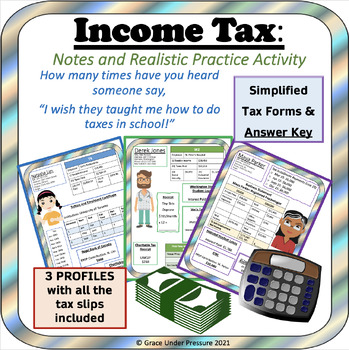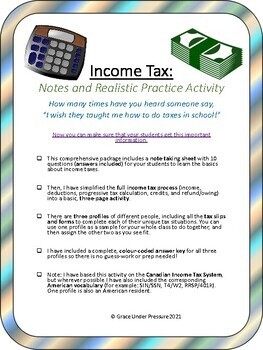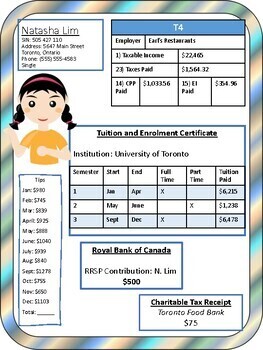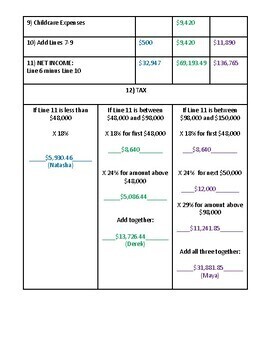Income Tax Activity- Personal Finance Worksheets: Practice Doing Realistic Taxes
- PDF
- Easel Activity
What educators are saying
Also included in
- This bundle includes my best-selling Household Budget Project that gets students thinking about income, student debt, income tax, bills, housing, transportation and more! The Credit Score Board Game teaches students how to build a strong credit score when using credit cards, student loans, mortgagesPrice $8.00Original Price $13.75Save $5.75
- Everything you need to teach your high school students about all aspects of personal finance and financial literacy in fun and visually-appealing lessons, activities, and games. These personal finance worksheets and activities cover important skills such as income taxes and tax refunds, budgeting, cPrice $15.00Original Price $26.75Save $11.75
Description
How many times have you heard someone say, "I wish they taught me how to do taxes in school!”
Now you can make sure that your students get this important information in a developmentally-appropriate and engaging financial literacy lesson.
- This comprehensive package includes a note-taking sheet with 10 questions (answers included) for your students to learn the basics about personal income taxes. (What are they, why do we pay them, when are they due, what are progressive taxes, and more.)
- Then, I have simplified the full income tax process (income, deductions, progressive tax calculation, credits, and refund/owing) into a basic, three-page activity that is accessible to high school students in a variety of settings. Students need to understand percent written as a decimal and can use a calculator or complete the calculations by hand.
- There are three profiles of different people, including all the tax slips and forms to complete each of their unique tax situations. The profiles are visually appealing and require some basic totalling, just as you would have to do yourself when preparing taxes.
- You can use one profile as a sample for your whole class to do together, and then assign the other two as you see fit.
- I have included a complete, colour-coded answer key for all three profiles so there is no guess-work or prep needed!
Note: I have based this activity on the Canadian Income Tax System, but wherever possible I have also included the corresponding American vocabulary (for example: SIN/SSN, T4/W2, RRSP/401k). One profile is also an American resident.








